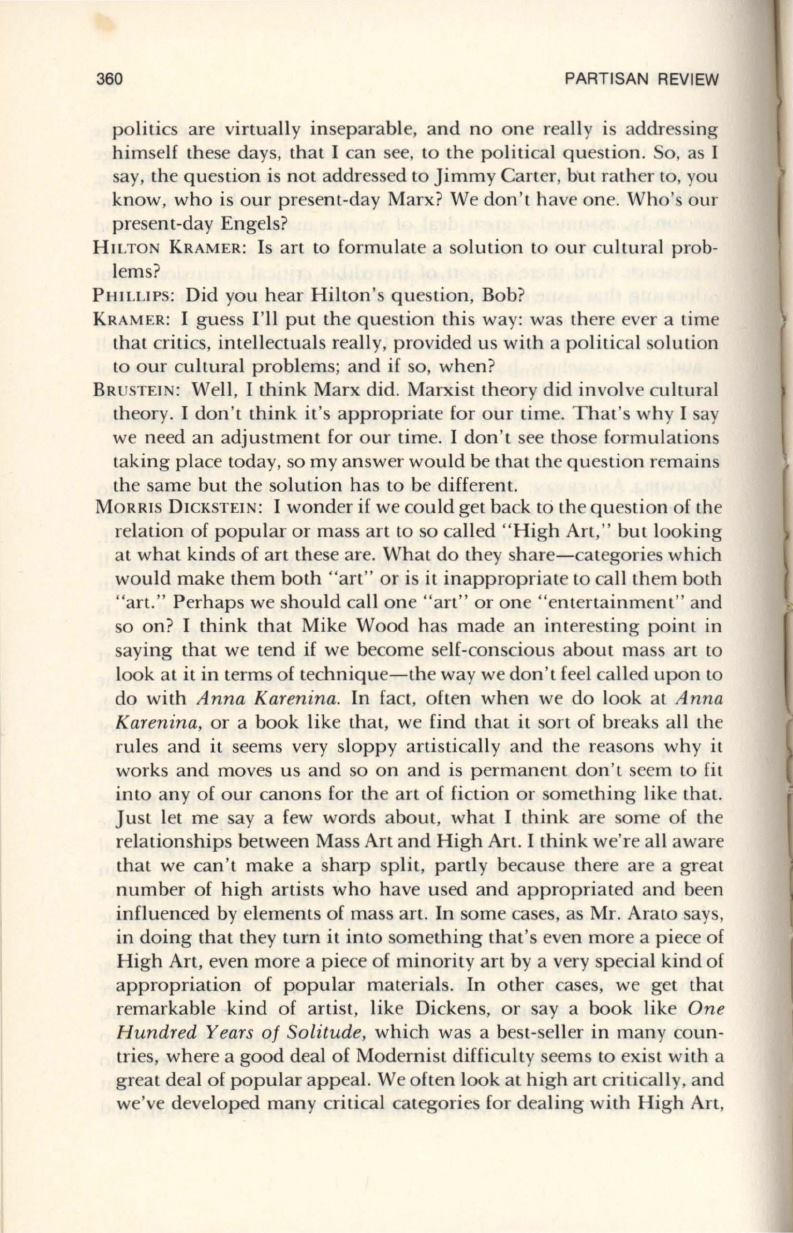
360
PARTISAN REVIEW
politics are virtually inseparable, and no one really is addressing
himself these days, that I can see, to the political question. So, as I
say, the question is not addressed to Jimmy Carter, but rather to, you
know, who is our present-day Marx? We don't have one. Who's our
present-day Engels?
HILTON KRAMER: Is art to formulate a solution
to
our cultural prob–
lems?
PHILLIP: Did you hear Hilton's question, Bob?
KRAMER: I guess I'll put the question this way: was there ever a time
that critics, intellectuals really, provided us with a political solution
to our cultural problems; and if so, when?
BRUSTEIN: Well, I think Marx did. Marxist theory did involve cultural
theory. I don't think it's appropriate for our time. That's why I say
we need an adjustment for our time. I don't see those formulations
taking place today, so my answer would be that the question remains
the same but the solution has to be different.
MORRIS DICKSTEIN: I wonder if we could get back to the question of the
relation of popular or mass art
to
so called "High Art," but looking
at what kinds of art these are. What do they share-categories which
would make them both "art" or is it inappropriate
to
call them both
"art." Perhaps we should call one "art" or one "entertainment" and
so on? I think that Mike Wood has made an interesting point in
saying that we tend if we become self-conscious about mass art ta
look at it in terms of technique-the way we don't feel called upon to
do with
Anna Karenina.
In fact, often when we do look at
Anna
Karenina,
or a book like that, we find that it sort of breaks all the
rules and it seems very sloppy artisticall y and the reasons why it
works and moves us and so on and is permanent don't seem to fit
into any of our canons for the art of fiction or something like that.
Just let me say a few words about, what I think are some of the
relationships between Mass Art and High Art. I think we're all aware
that we can't make a sharp split, partly because there are a great
number of high artists who have used and appropriated and been
influenced by elements of mass art. In some cases, as Mr. Arata says,
in doing that they turn it into something that's even more a piece of
High Art, even more a piece of minority art by a very special kind of
appropriation of popular materials. In other cases, we get that
remarkable kind of artist, like Dickens, or say a book like
One
Hundred Years of Solitude,
which was a best-seller in many coun–
tries, where a good deal of Modernist difficulty seems to exist with a
great deal of popular appeal. We often look at high art critically, and
we've developed many critical categories for dealing with High Art,


